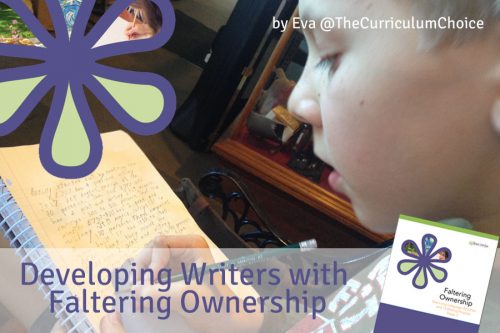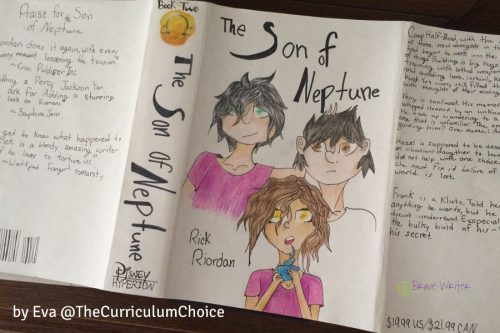A couple years ago, I was struggling to find a language arts curriculum that was both engaging and complimentary to our homeschool philosophy. In my quest, I sampled a wide variety of curricula. When I discovered Brave Writer, I knew I had found what I had been looking for.
Not only does Brave Writer offer a variety of writing curricula and resources, they also provide home study and online courses. After sampling a few of their free resources I knew I wanted to give the program a try. But where do I start?
In my research I read the Getting Started post and it hit me. “One day the student gets a detailed story to paper. The next week, she complains that she hates writing.” This was my son! I knew then that Faltering Ownership was where we needed to begin.
Faltering Ownership is designed for middle level students ages 11-12 and is designed to encourage greater independence and responsibility on their part. At this age or stage of development, students are more able to write without our constant supervision and aid. It is a full year language arts curriculum that incorporates a variety of writing styles and literature.
The goal is to establish a happy rhythm of language arts practices. The child’s capacity to handwrite, copy, perform dictation, understand and retain basic grammar concepts, identify literary elements, and play with language is growing rapidly!
One of the things I loved best about Faltering Ownership is that it incorporated many Charlotte Mason ideals that we had adopted in our homeschool. Referred to as the Brave Writer Lifestyle here are just a few:
- Poetry Teatimes
- Weekly Movies
- Nature Study
- Art & Music Appreciation
- Theatre
- Shakespeare
- Visual Journals
Faltering Ownership Projects
Though students do not require constant supervision at this age, they do appreciate support and modeling as they explore new skills. In addition to … the curriculum includes ten month-long writing projects.
My daughters favorite project in Faltering Ownership was undoubtedly the Dust Jacket Book Review. The project is broken down in very clear steps. In the first week, students select a book and create the front cover and the spine. The second week is devoted to the back cover which focuses on the reviews. The inside flaps are completed during the third and fourth weeks.
The book report … can be transformed into a more meaningful process when students design their own dust jackets (complete with artwork, plot summary, a concise biography of the author, and notable reviews of the book).
Best of all, the creation of the dust jacket can be used for the book once completed, personalizing it for the student. Though only one jacket is expected, my daughter loved this assignment so much she created a cover for each of the books in the series.



Leave a Reply